Ehlers-Danlos Syndrome (EDS)
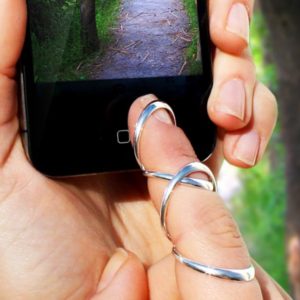
Ehlers-Danlos, Hypermobility and our Splints
Silver Ring splints can be used in a variety of ways to help with the issues and symptoms of EDS and hypermobility. This FLYER is helpful summary of the information below for a patient or to take to a therapist when starting the process of measuring and ordering SilverRing TM splints.
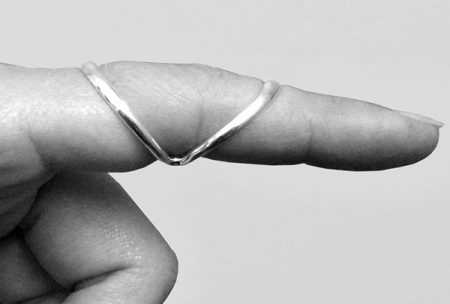
Swan Neck Splints
Use the Swan Neck Splint for mild to moderate hyperextension (less than 20°) of the PIP(joint closest to palm) or DIP(joint closest to nail). Worn on the finger or the thumb, the Swan Neck Splint blocks hyperextension without limiting the joint’s full range of motion. Both proximal and distal portions of the splint are individually sized and elliptically shaped for an exact fit.
The splints can often be overlapped by enlarging the distal size of the PIP splint by one full size. Splints on some fingers may overlap more than others and when ordering multiple swan necks, adjustments will need to be made to the angle of the splints and often an exchange is part of the process.
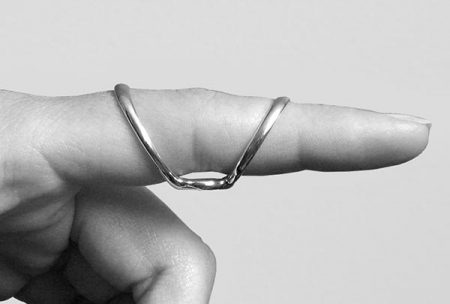
Boutonniere Splints
Some patients find the Boutonniere splint to be more comfortable with hyperextension greater than 20° or when subluxation of the joint is occurring. This splint is worn with the oval spacer under the joint to block hyperextension while allowing functional flexion. It positions the two rings farther from the joint for better leverage at a more comfortable angle. Depending on the finger length, these can also be overlapped.
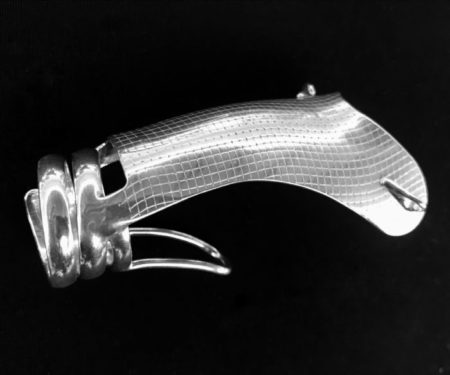
The THUMB
The majority of the time, the Stable Thumb 3D splint will offer the most correction and support for patients with EDS or hypermobility. This splint comes with multiple options that should be discussed between patient and therapist.
The Stable Thumb 3D splint is better when MCP joint is more enlarged and offers lateral support. It has a longer plate and can help with CMC issues as well.
Unless the patient has a flexion deformity, the Proximal Volar Extension (PVX) will be needed to block hyperextension. There are two PVX styles to choose from: The ‘U’ PVX distributes pressure around the head of the metacarpal avoiding direct pressure on a potentially sensitive area. The ‘Spoon’ PVX places more direct pressure with a curved pad that can more easily be adjusted by twisting or bending left/right. Both PVXs are designed to be equally strong. If a PVX breaks outside our warranty please contact us to discuss repairing or replacing the splint.
A bracelet is included with this splint and is necessary as a counter force. There are 3 clasp options: Lobster clasp, ‘S’ Hook and Magnetic Clasp. The Magnetic clasp has an additional fee and is the best option for people lacking fine motor dexterity or who have difficulty pinching. A standard 8 inch bracelet is sent with the splint. If the patient wishes to criss-cross the bracelet, which will keep the chain higher on the wrist, a longer bracelet may be requested.
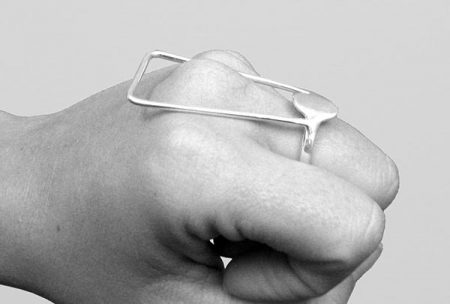
EDS Splints & 2½ Buddy Ring
Use the SilverRing™ EDS Splint to correct hyperextension of the MP joints without blocking flexion. Typically only one EDS Splint located on the middle finger is needed. With the splint centrally located it can help block all fingers from hyperextending during most activities. If needed, the EDS Splint can be worn on adjacent fingers.

If the small fingers MP is hyperextending and/or dislocating you may also want to look at the SilverRing™ 2½ Buddy Ring to control MP movement. These two splints can be combined for more support or ease of wear.
Insurance Coverage
Letter of Medical Necessity
In 2016 SilverRing™ Splint participated in a webinar with EDS Awareness. The webinar goes over the most commonly used SilverRing™ Splints. The following is a link to the webinar: Anatomy and SilverRing™ Splints for Ehlers-Danlos Hands. Jesse Garris starts talking about splints around minute 54:40.
SilverRing™ Splint has partnered and donated to the Ehlers-Danlos Society for over 20 years. Please visit their site to find out more about EDS and what the Society is doing to help the EDS community. Additionally, the SilverRing™ Splint company attends the Global Learning Conference each year where we measure and give advice about splints. We donate our time and it is free to get measurements. The conference will be held in Scottsdale, AZ Aug 3rd-6th, 2022.
Diagnosis Codes for EDS:
The following codes are not L codes, product codes or procedural codes for SilverRing Splints. They are diagnosis codes for Ehler-Danlos syndrome.
Q79.60 Ehlers-Danlos syndrome, unspecified
Q79.61 Classical Ehler-Danlos syndrome
Q79.62 Hypermobile Ehler-Danlos syndrome
Q79.63 Vascular Ehler-Danlos syndrome
Q79.69 Other Ehler-Danlos syndrome
